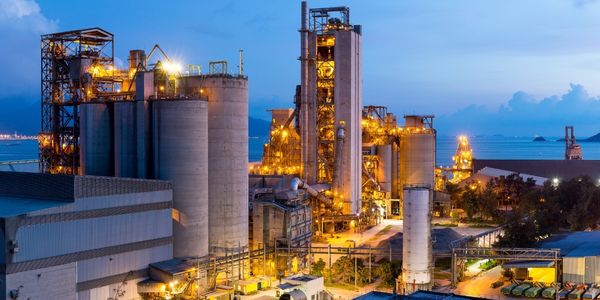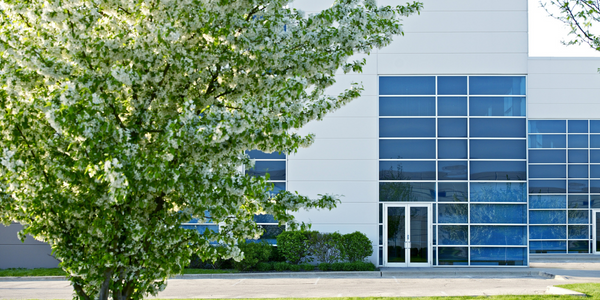Customer Company Size
Large Corporate
Region
- Europe
Country
- Croatia
Product
- ICONICS’ GENESIS32™
- GraphWorX™32
- AlarmWorX™32
- TrendWorX™32
- BizViz™
Tech Stack
- Microsoft Windows Server 2003 R2
- Microsoft Office 2007
- Microsoft SQL 2005 Express Edition SP2
Implementation Scale
- Enterprise-wide Deployment
Impact Metrics
- Environmental Impact Reduction
- Digital Expertise
Technology Category
- Application Infrastructure & Middleware - Data Exchange & Integration
Applicable Industries
- Cement
Applicable Functions
- Discrete Manufacturing
- Quality Assurance
Use Cases
- Continuous Emission Monitoring Systems
- Process Control & Optimization
Services
- System Integration
- Software Design & Engineering Services
About The Customer
Dalmacijacement d.d., of Kaštel Sućurac, Croatia is part of the CEMEX consortium, one of the top building materials companies in the world. The company is the Croatian market leader in cement production, with three factories (plants): Sveti Juraj (Saint Juraj), Sveti Kajo (Saint Kajo) and 10. Kolovoz. Dalmacijacement d.d. selected ICONICS for its emissions monitoring system upon ECCOS inženjering’s recommendation. The ICONICS solution helped meet the building materials company’s requirements for cost-effective data visualization, control, alarming, trending and reporting.
The Challenge
The Republic of Croatia, in cooperation with The European Union, introduced legislation for environmental protection through continuous emissions monitoring. Dalmacijacement d.d. set out, with assistance from ECCOS inženjering, to bring all of its factories under compliance, with the goal of creating a continuous emissions monitoring system (CEMS). Manufacturing facilities are often assumed to be sources of pollution, so a system was required that could continuously monitor emissions, graphically depict these emissions, normalize the measurements, archive measured and calculated (i.e. normalized) values, inform the public through corporate Web pages and, most importantly, create daily, monthly and yearly reports in Microsoft Excel and XML-formats that adhere to the legislative requirements.
The Solution
The newly created system collects raw (i.e. measured) values and recalculates them to create normalized data based on the normalization factors. Both raw and normalized values are presented to the operator through ICONICS GraphWorX in real time. If any of the measured values exceed the defined upper limits, an alarm is triggered via AlarmWorX, informing the operator to change the process in question. Any other malfunctions or errors in the equipment also trigger alarms, which are depicted in GraphWorX and stored to a database via AlarmWorX logger. Data is stored to a SQL database through ICONICS’ TrendWorX. Since the project has to satisfy people in different positions with different interests, data is stored in three logging groups; 1 minute; 10 minute; and 30 minute average values. The first two groups are important to the operators at the factory (real time) and to the public through corporate Web pages (slight delay). The third group (30 minute average values) is needed to create reports for the Croatian environmental agency.
Operational Impact

Case Study missing?
Start adding your own!
Register with your work email and create a new case study profile for your business.
Related Case Studies.

Case Study
System 800xA at Indian Cement Plants
Chettinad Cement recognized that further efficiencies could be achieved in its cement manufacturing process. It looked to investing in comprehensive operational and control technologies to manage and derive productivity and energy efficiency gains from the assets on Line 2, their second plant in India.

Case Study
Digital Transformation of Atlanta Grout & Tile: An IoT Case Study
Atlanta Grout & Tile, a Tile, Stone & Grout restoration company based in Woodstock, Georgia, was facing challenges with its traditional business model. Despite steady growth over the years, the company was falling behind the web revolution and missing out on the opportunity to tap into a new consumer base. They were using independent software from different vendors for each of their department information and workforce management. This resulted in a lot of manual work on excel and the need to export/import data between different systems. This not only increased overhead costs but also slowed down their response to clients. The company also had to prepare numerous reports manually and lacked access to customer trends for effective business decision-making.

Case Study
Revolutionizing Construction Equipment Rental: A Case Study on ProsRent and ENO8
ProsRent, a startup that won the 'Best Financial Opportunity' and 'Best Pitch' at CodeLaunch 2016, aimed to revolutionize the way construction professionals source and rent heavy equipment. In the construction industry, project managers and contractors typically rent heavy equipment from supply companies. However, predicting inventory can be challenging, and finding the required equipment at the right time and place can be a hassle. If the preferred vendor doesn't have the required equipment, it results in wasted time and money in searching for it, often leading to higher costs due to non-preferred rates and increased delivery costs if the vendor is located far from the job site. Suppliers, on the other hand, desired access to a wider base of trusted renters that they didn't have to vet themselves and wanted to offer dynamic rental pricing based on demand and availability in their market. ProsRent's challenge was to produce a minimum viable product that was fast and first to market but also strong enough to engender loyalty and repeat business from the target market.

Case Study
AI-based Automation for Commercial Office HVAC: A Verdigris Case Study
Modern buildings are required to run longer hours, support a variety of end uses, and contribute to higher levels of economic productivity, leaving a thin margin for error. However, even the most advanced building and environmental control systems have failed to adequately support facilities and operations management. Buildings are often inefficient and the people using them are underserved. To meet occupant comfort and maintain cost and energy efficiency, a dynamic, AI-assisted approach is needed.

Case Study
Revamping EE's Legacy ERP: A Case Study on BT's Strategic Transformation
EE, even after its merger with BT, was operating its ERP estate on legacy infrastructure, hosted on the premises of a third-party supplier. This outdated system resulted in a volume-based operational model, higher time to market, longer delivery cycles, and unsatisfactory customer experience. BT recognized the need for a strategic transformation of these aging ERP systems and sought a partner who could proactively manage application services. The partner was also expected to handle development requirements associated with application management services, drive accountability, and ownership with a time and target-driven transformation of these services. BT's primary goals were to improve customer experience, reduce cycle time, and measure these improvements with precision.







